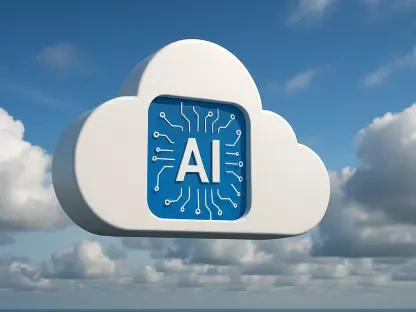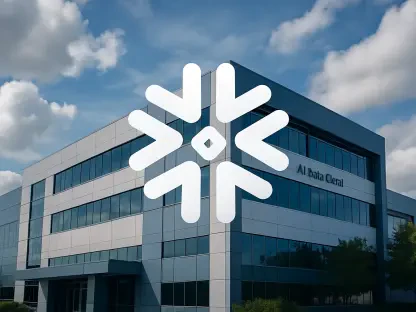As the landscape of cloud computing advances, enterprises are confronted with more complex infrastructure management challenges and are in pursuit of innovative orchestration solutions. These tools must deliver flexibility, scalability, and simplicity, which are essential for the fluid business environments of today. The quest has led to the development of next-generation orchestration platforms that are setting new benchmarks, going beyond what Kubernetes has offered.Kubernetes has been a cornerstone in managing containerized applications, but the ever-growing demands of modern businesses need orchestration that can keep pace with rapid changes and scale. The new wave of orchestration tools meets these demands by integrating cutting-edge features and capabilities that streamline operations and enhance efficiency.These advanced orchestration mechanisms are making it possible to deploy, manage, and scale applications with unprecedented ease, thus allowing businesses to adapt faster to market shifts and maintain a competitive edge. They are the powerhouse behind the scenes, automating complex tasks and providing a more intuitive interface for infrastructure management.As we look to the future, these next-generation tools are not just surpassing Kubernetes; they are redefining cloud infrastructure management, marking a significant transformation in how we think about and interact with cloud environments. Businesses embracing these advanced orchestration tools are finding themselves better equipped to navigate the complexities of the digital landscape and leverage the full potential of cloud computing.
The Limitations of Kubernetes in Modern Cloud Environments
Addressing Complexity and the Learning Curve
Kubernetes has revolutionized the world of container orchestration and become a cornerstone in the realm of cloud computing. Its comprehensive architecture, which includes handling networking, storage, security, and cluster management, offers a robust set of capabilities. Yet, these same features contribute to a significant learning curve for those new to the platform.The in-depth expertise required to effectively operate within the Kubernetes ecosystem can deter newcomers, who must navigate complex components and operational strategies. Despite this, the promise of Kubernetes’ powerful functionality drives the search for more user-friendly alternatives.Responding to the need for simplification, the industry is turning toward tools designed to make the use and management of Kubernetes more accessible. These tools aim to automate processes, incorporate guardrails to adhere to best practices, and deliver more intuitive user interfaces, all in the interest of alleviating the workload of DevOps teams.By reducing the complexities associated with Kubernetes, these innovations are paving the way for broader adoption and enabling organizations to harness the full potential of container orchestration without being overwhelmed by its intricate details. The balance between ease of use and maintaining the capabilities that make Kubernetes a leading platform remains a focal point in the evolution of cloud computing technologies.
The Push for Broader Orchestration Capabilities
Kubernetes has transformed container orchestration but confronts challenges with newer technologies like serverless frameworks and VM management. As cloud ecosystems evolve, there’s an urgent demand for orchestration tools capable of handling a wider array of cloud services. Upcoming platforms aim to address this by streamlining the orchestration of infrastructures, automating application deployments, and simplifying network configurations.These platforms are designed with a vision that accommodates continuous advancement in application management and align with emerging paradigms such as infrastructure as code (IaC) and immutable infrastructure. They present solutions that cater to the complex interactions within modern application environments, ensuring that they can manage not just containers but also heterogeneous resources within the cloud.These next-gen systems are built to be future-proof, enabling them to cope with the dynamic nature of cloud technologies. By extending their capabilities beyond Kubernetes’ scope, they offer flexibility that aligns with current industry trends and user expectations. This ensures that businesses can leverage the full spectrum of cloud services to remain competitive and agile in a fast-paced digital landscape.
The Advancements in Next-Generation Cloud Orchestration Tools
Enhanced User Experience and Simplicity
The evolution of cloud orchestration tools is fueled by a desire for simplicity without compromising power. Modern orchestration solutions prioritize a user-friendly experience, offering intuitive interfaces that streamline complex processes. They do not forsake robustness; rather, they enhance it. These tools help users to manage cloud resources more efficiently, often requiring fewer steps.In an era where time-to-market is critical, these advanced platforms are a boon to developers. They present a blend of guided operations, templates, and improved visualizations, simplifying the setup and maintenance of cloud environments. This user-centric approach is in keeping with the industry’s shift toward more accessible technology.Moreover, the latest cloud orchestration tools expand the scope of what can be accomplished within Kubernetes, a favorite among developers for its flexibility and familiarity. They do this without making the ecosystem overwhelmingly complex for newcomers. As a result, individuals and organizations benefit from being able to deploy intricate services with relative ease – a key feature of intelligent technology evolution.This balance of simplicity and functionality is not just an incremental improvement; it is the cornerstone of modern cloud computing strategies. As we move forward, the continuous refinement of these orchestration tools will be central to leveraging the full potential of cloud infrastructures, ultimately empowering businesses to perform more efficiently and innovate at a faster pace.
Scaling and Multi-Cloud Strategy Support
In today’s ever-expanding cloud environment, orchestration tools are evolving to meet the scalability demands of growing businesses. These advanced tools are engineered to deftly handle the management of extensive networks, potentially encompassing thousands of nodes. Their robust architectures prevent performance issues even as services expand.Moreover, recognizing the multi-cloud strategy increasingly adopted by enterprises, these next-gen tools are built with versatility in mind. They enable organizations to navigate and integrate various cloud services seamlessly, thus circumventing the constraints of being tied to a single provider. Through this multi-cloud approach, companies can adeptly manage their resources across different platforms, leading to substantial cost efficiencies and greater flexibility.By leveraging such tools, businesses ensure they can scale as needed without sacrificing performance. They also gain the agility to shift workloads between clouds as cost, functionality, and strategic needs dictate. This agility is paramount for maintaining a competitive edge and maximizing the value derived from cloud investments. As the cloud landscape grows more complex, these orchestration tools are indispensable assets for any forward-thinking enterprise looking to thrive in a multi-cloud ecosystem.
Emerging Tools and Frameworks Shaping the Landscape
Diversity in Workload Management
As businesses grapple with a broadening spectrum of workloads, the emergence of platforms like HashiCorp Nomad and Apache Mesos is pivotal. These innovative tools are specifically engineered to adeptly handle a vast array of services – from containers and batch processing to microservices and scheduled tasks. Crafted with a keen focus on both federation and scalability, Nomad and Mesos excel in deploying diverse workloads seamlessly across numerous data centers and varied cloud infrastructures.A primary advantage of such platforms is their design centered on the effortless expansion of clusters. This inherent flexibility grants organizations the ability to scale their operations up or down with relative ease, ensuring the dependable distribution and management of tasks in a global landscape. With the increasing need for more complex and reliable workload management solutions, Nomad and Mesos offer the robust architecture required to meet the demands of modern, distributed environments. They contribute significantly to enhancing the scalability and resilience needed for companies to sustain and grow their international presence effectively. As these platforms continue to evolve, they remain indispensable in a landscape that demands constant innovation and adaptability.
The Role of Serverless Frameworks and IaC Tools
Serverless computing represents a transformative approach to cloud utilization, putting application logic at the forefront and relegating infrastructure concerns to the background. In this new model, the operational burden of managing servers is virtually eliminated, as the serverless frameworks take the wheel, dynamically scaling applications in response to actual usage without any manual intervention. This evolution in cloud computing not only simplifies the deployment process but also enhances efficiency.Complementing this shift, infrastructure-as-code (IaC) tools have become the bedrock of modern cloud environments. Tools such as Terraform and AWS CloudFormation epitomize this trend, providing the means to automate cloud resource provisioning with code. These IaC platforms allow for the seamless creation, modification, and versioning of complex infrastructures with precision and efficiency that manual processes could hardly match.The implications of serverless and IaC are significant: together, they represent an ecosystem where IT operations are becoming more streamlined and error-resistant. The provisioning and scaling of resources can now be tightly controlled via declarative code, making infrastructure setup more predictable and freeing developers to focus more on creating value through their applications. With these advanced toolsets, DevOps practices are elevated, allowing teams to build and manage cloud-native applications more swiftly and with greater reliability.
The Integration of AI and the Expansion to Edge Computing
The Role of AI and ML in Cloud Orchestration
The intersection of cloud orchestration with artificial intelligence (AI) and machine learning (ML) represents a cutting-edge future where these technologies will be pivotal in managing cloud resources. AI and ML will bring a level of intelligence to the cloud that enables the automatic scaling of resources, judicious allocation, and rapid recoveries from faults. These smart algorithms are capable of examining system performance metrics to forecast needs for scaling and preemptively troubleshoot issues before they become problematic.This forward-looking approach transforms cloud service management by injecting it with unprecedented reliability and operational efficiency. Cloud orchestration will evolve beyond static rule-based protocols to dynamic, learning-driven systems that adapt in real-time to the fluctuating demands of workloads and services. AI and ML will not be mere enhancements to cloud orchestration; rather, they will be foundational to the orchestration tools of tomorrow.As the technology matures, cloud orchestration tools that leverage AI and ML are poised to become industry standards. Organizations adopting this approach will likely experience significant advantages, from cost reductions due to optimized resource use to improved user experience because of the high availability and consistent performance of cloud services. In sum, AI and ML are not just adjuncts to cloud orchestration—they are set to be its core, driving the transformation of the cloud industry.
Orchestration Tools for Edge Computing
As the paradigm of computing shifts toward the periphery with edge computing, the imperative for orchestration tools to keep pace has grown significantly. These tools are being refined to deftly manage workloads even in these more scattered environments. Orchestrating consistency in operation across a multitude of individualized edge locations comes with its own set of complexities.The latest generation of orchestration solutions is stepping up, crafted to oversee and implement applications efficiently across various edge sites. They embody the progressive amalgamation of the more centralized cloud computing with the distributed nature of edge computing. This adaptation is crucial for meeting the new computational requirements presented by the Internet of Things (IoT), the necessity for instantaneous data analysis, and the delivery of content that is tailored to local contexts.These advanced orchestration tools are making it possible to sustain the seamless operation that’s historically been associated with the cloud, now extended to the far reaches of edge computing networks. This synergy is poised to transform how we manage data-intensive applications, ensuring that technology keeps up with the ever-increasing appetite for real-time processing and decision-making at the edge of our networks.
The Business Implications of Advanced Orchestration Tools
Paving the Way for Strategic Business Shifts
Next-gen orchestration tools are proving to be more than just advanced technological solutions; they’re catalysts for profound business transformations. These tools enable businesses to leap into innovation and smoothly manage intricate applications, thus bolstering confidence. The dual impact of increased efficiencies and reduced costs opens up exciting forays into untapped markets. Companies equipped with these tools can effortlessly incorporate leading-edge technologies, overcoming former obstacles that might have hindered progress. The heightened competitive edge they provide is crucial in an era where digital prowess is king.The flexibility that comes with such orchestration tools has a domino effect, influencing not just the day-to-day IT operations but also informing the broader business strategies critical to fostering growth and remaining vital in the global market. This change is emblematic of a larger shift toward nimble, adaptive operations that can swiftly respond to changing market dynamics and customer demands. Embracing these tools is no longer a luxury but a necessity for organizations aiming to not just survive but thrive amidst the relentless pace of digital change.
Future Trends and Evolving Strategies
Looking ahead in the realm of cloud computing, the role of cloud orchestration tools is poised for significant evolution. These tools will likely see advancements in their integrative capabilities, becoming more complex and intuitive. With a strong focus on supporting distributed computing across the globe, these tools will be instrumental in managing the broad range of dynamic cloud resources required for large-scale operations.The trajectory of cloud orchestration tools points toward a future where enhanced automation is the norm. Manual tasks will be increasingly automated, streamlining processes and improving efficiency. This will necessitate that these tools are both robust in guarding against cyber threats and flexible enough to adapt to various regulatory environments.Through these advances, cloud orchestration tools will become more critical in steering the direction of technological development and business strategy. As they grow in sophistication, the potential for them to act as catalysts for innovation swells. Their influence will extend beyond current applications as they lay the groundwork for seamless implementation of cutting-edge technologies and methodologies in cloud computing. In essence, cloud orchestration will not only reflect technological progress but actively push its boundaries forward.









